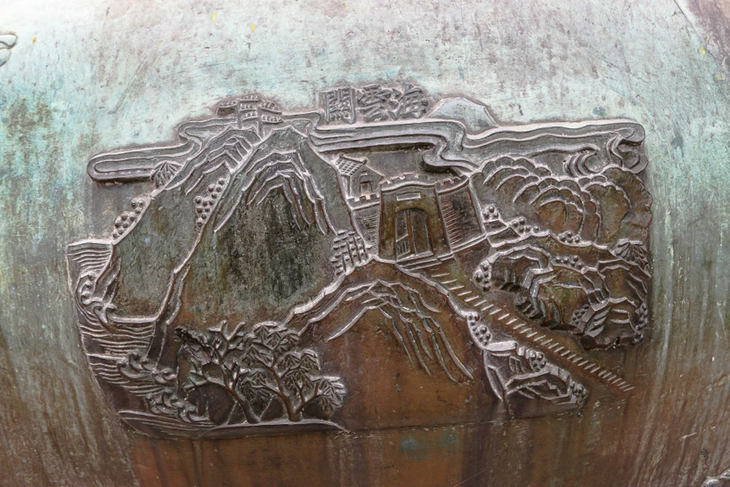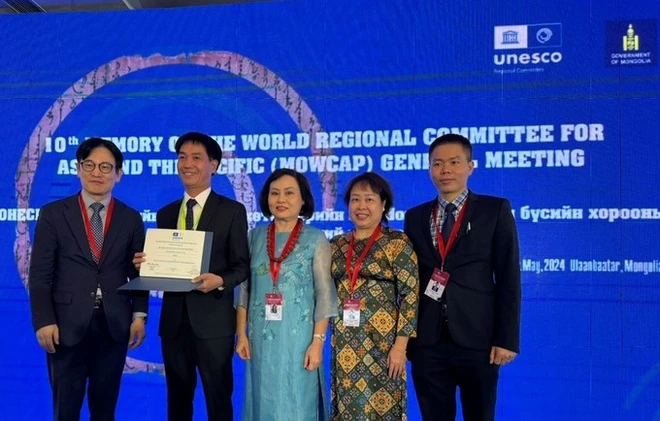The nine historic Dynastic Urns, housed in the Hue Imperial Citadel in the central province of Thua Thien Hue, have been inscribed in the “Memory of the World Register”.

Image of Hai Van Gate engraved on the urn. (Photo: Department of Cultural Heritage)
The prestigious recognition was awarded unanimously by all 23 member countries at the 10th plenary meeting of UNESCO’s “Memory of the World Committee for Asia and the Pacific”, held in Mongolia on May 8.
These bronze urns, all meticulously crafted, stand horizontally within Thế Tổ Miếu (To Mieu Temple) courtyard in the Hue Imperial Citadel, a place used today to worship the kings of the Nguyen Dynasty - the last feudal regime which ruled Vietnam from 1802 to 1945. Representing the country’s unity and beauty as well as the enduring legacy of the Nguyen Dynasty, they were cast in late 1835 and completed in early 1837, under the reign of King Minh Mang.
The urns transcend their symbolic function, serving as a unique “geographic encyclopedia” of 19th century Vietnam. Their surfaces are adorned with 162 exquisite engravings depicting Vietnam’s diverse landscapes, from majestic mountains and flowing rivers to bustling daily activities. 90 images of native flora and fauna contribute to a remarkable display of artistry and historical documentation.

The Vietnamese delegation receives the recognition at the UNESCO meeting. (Photo: Department of Cultural Heritage)
With this addition, Vietnam now boasts 10 heritage sites inscribed on the UNESCO “Memory of the World Register in the Asia-Pacific Region”, including 3 documentary world and 7 documentary national heritages.